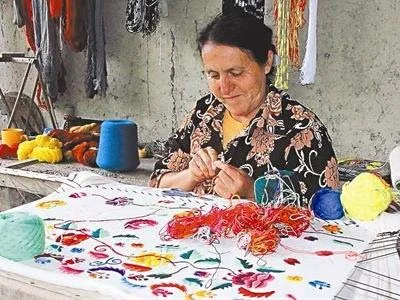Tejeduria A Mano
One Family’s Quest to Keep Ecuador’s Intangible Cultural Heritage, Ikat, Alive
Located in the sierra region of Ecuador, the Jiménez family is working to keep the art of ikat weaving and Cañari culture alive. Despite the term’s Malay-Indonesian origins, ikat weaving in southern Ecuador predates both Inca and Spanish influence. Ikat is a resist dye technique where, in Ecuador, cabuya cactus fibers are wrapped around raw yarn before the dye process. This resist creates a pattern that will be revealed as the artist weaves. It is one of the most mentally intense techniques as the artist needs to be able to constantly visualize the pattern as the design is formed both by the way that the yarn has been dyed, as well as how the yarn is distributed on the loom. Tejeduria A Mano uses wool, cotton, yucca, and natural plant and mineral dyes that are made on site.
Jose Gilberto Jimenez Ulloa is a sixth generation weaver. Today, he and his family work full time as weavers, and offer workshops to tourists and local artisans alike. Ana María Ulloa Verá, his wife, is responsible for all of the fine touches; embroidery, handbraids, and crochet. Their two children Ismael and Monica also support the family business. Butterflies, hummingbirds, and mountains are a few of the symbols the Jimenez family incorporates into their weavings as a means to keep their Cañari culture present in all their work.
Ikat print has become somewhat of a global phenomenon, unfortunately this has not translated to the sustenance of ikat weaving, which in Ecuador, and other parts of the world, is in decline. The ubiquity of fast fashion, preferences towards westernized styles over traditional dress, and the pressure of globalization are all contributing to fewer and fewer ikat weavers. Despite these difficulties, Tejeduria A Mano remains committed to producing some of the finest ikat adornments.






